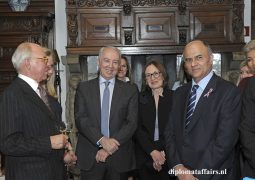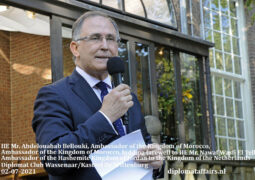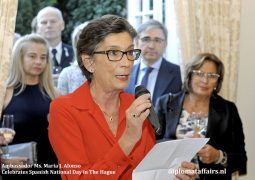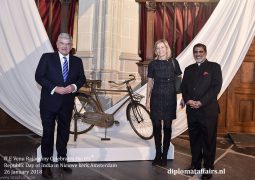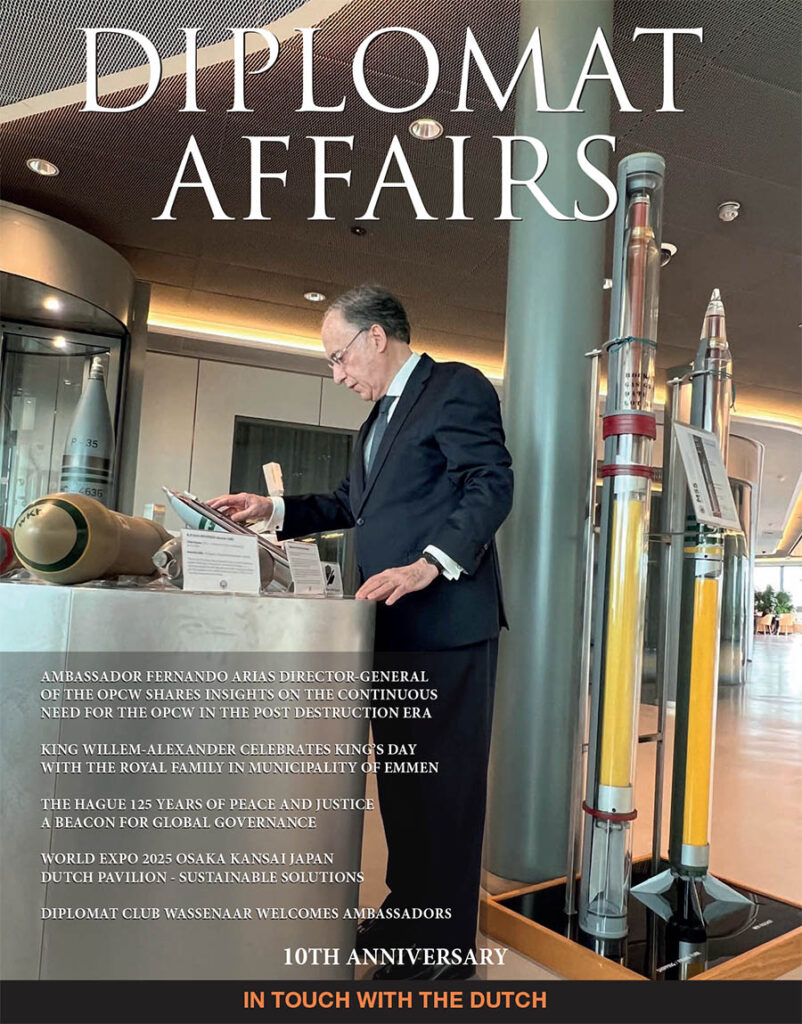Dining with the Tsars: fragile
The Hermitage Amsterdam’s fifth anniversary exhibition Dining with the Tsars. Fragile beauty from the Hermitage opened on 6 September 2014. Eight magnificent porcelain and creamware services from the collection of the Hermitage in St. Petersburg is exhibited in a setting that conveys what the balls and banquets of the Tsar’s court were like. Visitors will
imagine they are guests, in possession of a coveted imperial invitation, climbing the steps of the Winter Palace, reviewing the rules of etiquette and preparing for a festive occasion. Finally they enter the main hall where the fine porcelain dinnerware is set out in a festive display. The exquisite porcelain services, comprising no less than 1,034 pieces, exhibited on authentically laid tables with decorative centrepieces, reveal the enchanting grandeur of the Tsars’ banquets. The exhibition tells the story of the lavish ball and banqueting culture that reached its zenith under the reign (1762-1796) of Catherine the Great, Queen of Feasts, when hundreds of dishes would be served at a single banquet and thousands of guests attended the balls. The last tsar, Nicholas II (ruled 1894-1917) and his wife Alexandra, who organised the largest balls but were only present for as briefly as possible. With their abdication, the ball and banqueting customs that had once captured the imagination of all the courts of Europe came to an end.
Never before have so many porcelain dinnerware pieces from the Hermitage been exhibited in the Netherlands
The finest pieces are from the dinnerware collections of Catherine the Great, such as the Green Frog Service (Wedgwood, England), the Cameo Service (Sèvres, Paris, exhibited for the first time with silver gilt flatware), which at one time comprised nearly a thousand pieces, and the Berlin Dessert Service (Königliche Porzellan-Manufaktur Berlin). The services
of later Tsars were no less impressive and significant for their connection to European history. The services are exhibited in accordance with the rules of etiquette, augmented with ornate centrepieces, gold-rimmed crystal glassware, candelabras, vases, detailed silverwork and wall decorations. The exhibition features a wide range of pieces, from ice buckets
for liqueur bottles and ice-cream coupes to salt and pepper sets and table figurines.
Beauty from the Hermitage
The exhibition also offers a culinary view of imperial dining customs, in a culture where banquets of 300 dishes were no exception. Dessert was the highpoint of the meal and the ideal course for showing off the host’s wealth and refined taste. Richly decorated delicacies were served with exceptional inventiveness. There is attention for iconography and the diplomatic function of giving services as gifts and hosting state dinners in the eighteenth and nineteenth centuries. And the balls and performances, gossip and scandal also feature in the exhibition. Evidence of the excesses of the imperial court abounds.
Particularly revealing are the quotes drawn from the memoires of Marie Cornélie van Wassenaer Obdam. She visited the Winter Palace in 1824 as a member of the retinue of Anna Paulowna and the later King Willem II. The surpring final exhibit is the service given to Stalin by the Hungarian people in 1949, which has never been used or exhibited before. It illustrates the diplomatic role that dinnerware also played in the twentieth century.
Never before have so many porcelain dinnerware pieces from the Hermitage been exhibited in the Netherlands. The rich collection of European porcelain from the Hermitage in St. Petersburg comprises over 15,000 items, purchased by or given as gifts to the Tsars of Russia between 1745 and the years prior to the First World War. The services, which include many unique pieces, were produced by leading porcelain manufacturers such as Meissen, Sèvres, Gardner and Wedgwood and decorated to the highest artistic standard.
You may also like...
Sorry - Comments are closed


